
by Shep Eubanks | Sep 13, 2019

Common Salvinia Covering Farm pond in Gadsden County
Photo Credit – Shep Eubanks UF/IFAS Gadsden County Extension
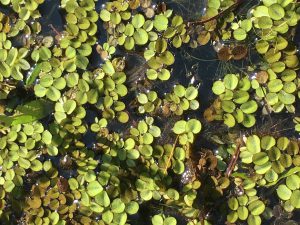
Close up of common Salvinia
Photo Credit – Shep Eubanks UF/IFAS Gadsden County Extension
Aquatic weed problems are common in the panhandle of Florida. Common Salvinia (Salvinia minima) is a persistent invasive weed problem found in many ponds in Gadsden County. There are ten species of salvinia in the tropical Americas but none are native to Florida. They are actually floating ferns that measure about 3/4 inch in length. Typically it is found in still waters that contain high organic matter. It can be found free-floating or in the mud. The leaves are round to somewhat broadly elliptic, (0.4–1 in long), with the upper surface having 4-pronged hairs and the lower surface is hairy. It commonly occurs in freshwater ponds and swamps from the peninsula to the central panhandle of Florida.
Reproduction is by spores, or fragmentation of plants, and it can proliferate rapidly allowing it to be an aggressive invasive species. When these colonies cover the surface of a pond as pictured above they need to be controlled as the risk of oxygen depletion and fish kill is a possibility. If the pond is heavily infested with weeds, it may be possible (depending on the herbicide chosen) to treat the pond in sections and let each section decompose for about two weeks before treating another section. Aeration, particularly at night, for several days after treatment may help control the oxygen depletion.
Control measures include raking or seining, but remember that fragmentation propagates the plant. Grass carp will consume salvinia but are usually not effective for total control. Chemical control measures include :carfentrazone, diquat, fluridone, flumioxazin, glyphosate, imazamox, and penoxsulam.
For more information reference these IFAS publications:
Efficacy of Herbicide Active ingredients Against Aquatic Weeds
Common salvinia
For help with controlling Common salvinia consult with your local Extension Agent for weed control recommendations, as needed.
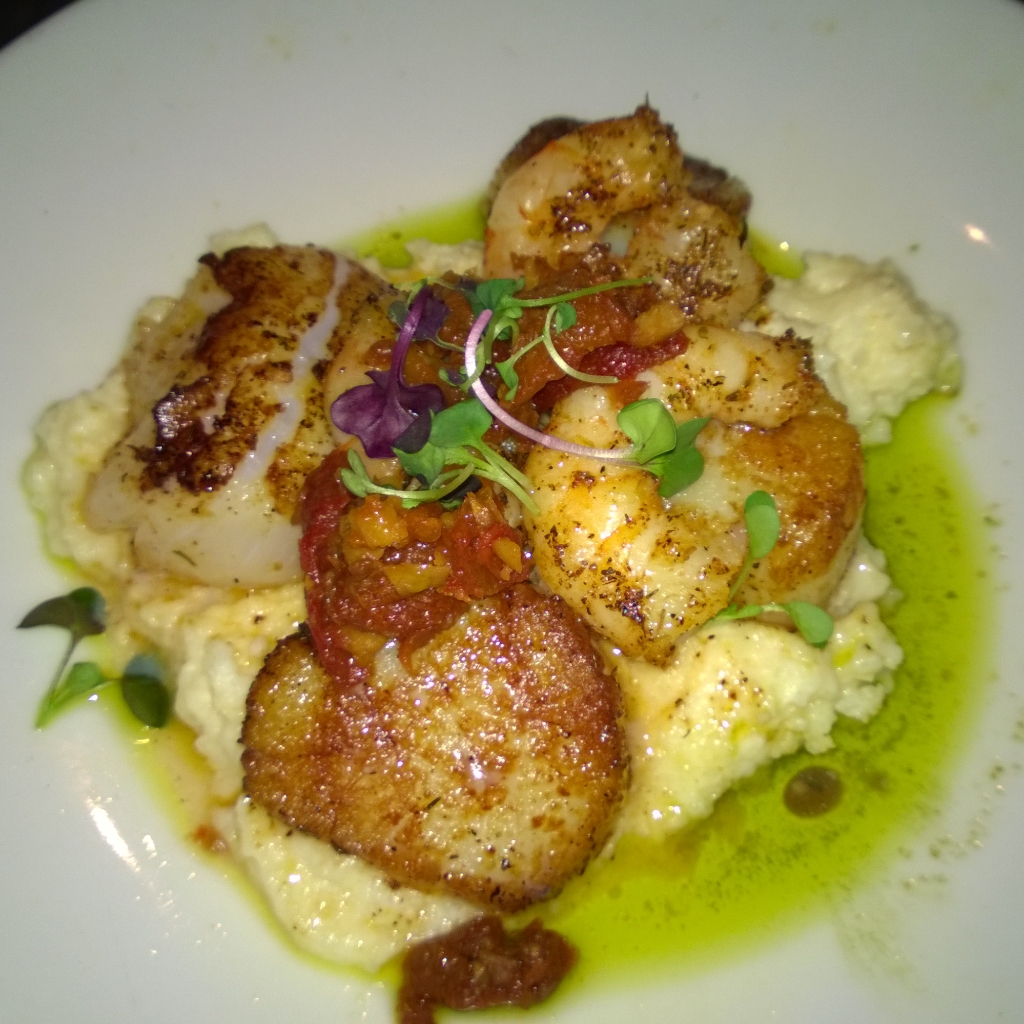
by Laura Tiu | Feb 16, 2018
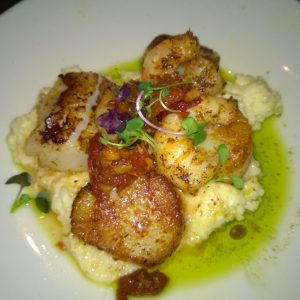
Scallops and shrimp over grits.
I have been involved in the aquaculture industry since the late 1980’s when I got my first job out of college on a tropical fish farm in Plant City, FL. As you can imagine, the industry has changed a lot since then. When folks find out I have worked in aquaculture, the same question seems to arise: “Is farm-raised fish safe to eat as wild caught?” I would like to say that I don’t understand where this question comes from, but over the years I have seen a bewildering number of mass media headlines touting misinformation about farm-raised fish and not enough touting the benefits. In fact, I saw a post this week on Facebook actually claiming that tilapia have no skin or bones and cannot be found in the wild, both not true. It is no wonder people are so confused. Many of the claims made are not research-based and a quick review of the scientific literature will disprove the statements, but who has time for that?
Aquaculture currently supplies over fifty percent of all seafood consumed and will expand in the future due to a limit on the amount of wild fish that can be sustainably harvested, and increasing demand by a growing population. Sustainable, responsible aquaculture is needed to fill that gap. Fish are farmed using a variety of production methods including ponds, raceways, recirculating land-based systems and in ocean net pens. Each one of these fish species and production methods comes with pros and cons, similar to the production of livestock and fruits and vegetables. Each species can be evaluated based on its environmental impact, production method and even country of origin.
The American Heart Foundation recommends eating fish (particularly fatty fish rich in Omega-3s) two times per week. We currently only consume about half of that. This recommendation includes a variety of farm-raised and wild-caught fish. Both are crucial to meet current and future demand for seafood and omega-3 fatty acids. A common misconception is that farmed fish is not as healthy or nutritional valuable as wild caught fish although this claim has been largely disproven. One recent paper (Trushenski et al, 2017) compared the nutritional values of wild-caught and farmed bluegill, largemouth Bass and hybrid striped bass and concluded that the farmed fish provided more long-chain polyunsaturated fatty acids (LC-PUFAs) per portion that wild fish, however both are excellent sources of high quality protein and nutrients.
With the Lenten season upon us, a time of a traditional increase in seafood consumption, what is an easy way to choose wild and farm-raised seafood? One website and smartphone app that I find easy to use is Seafood Watch (www.seafoodwatch.org). Seafood Watch uses an extensive evaluation system using research and a panel of experts to label seafood products as green (best choice), yellow (good alternative) and red (avoid) depending on the variety’s sustainability.
With this information and a little bit of homework, I hope you come to the same conclusion that I have. Both farm-raised fish and wild-caught fish are delicious, nutritious and great additions to your diet.
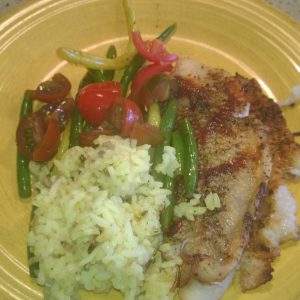
Baked tilapia, rice and vegetable medley.
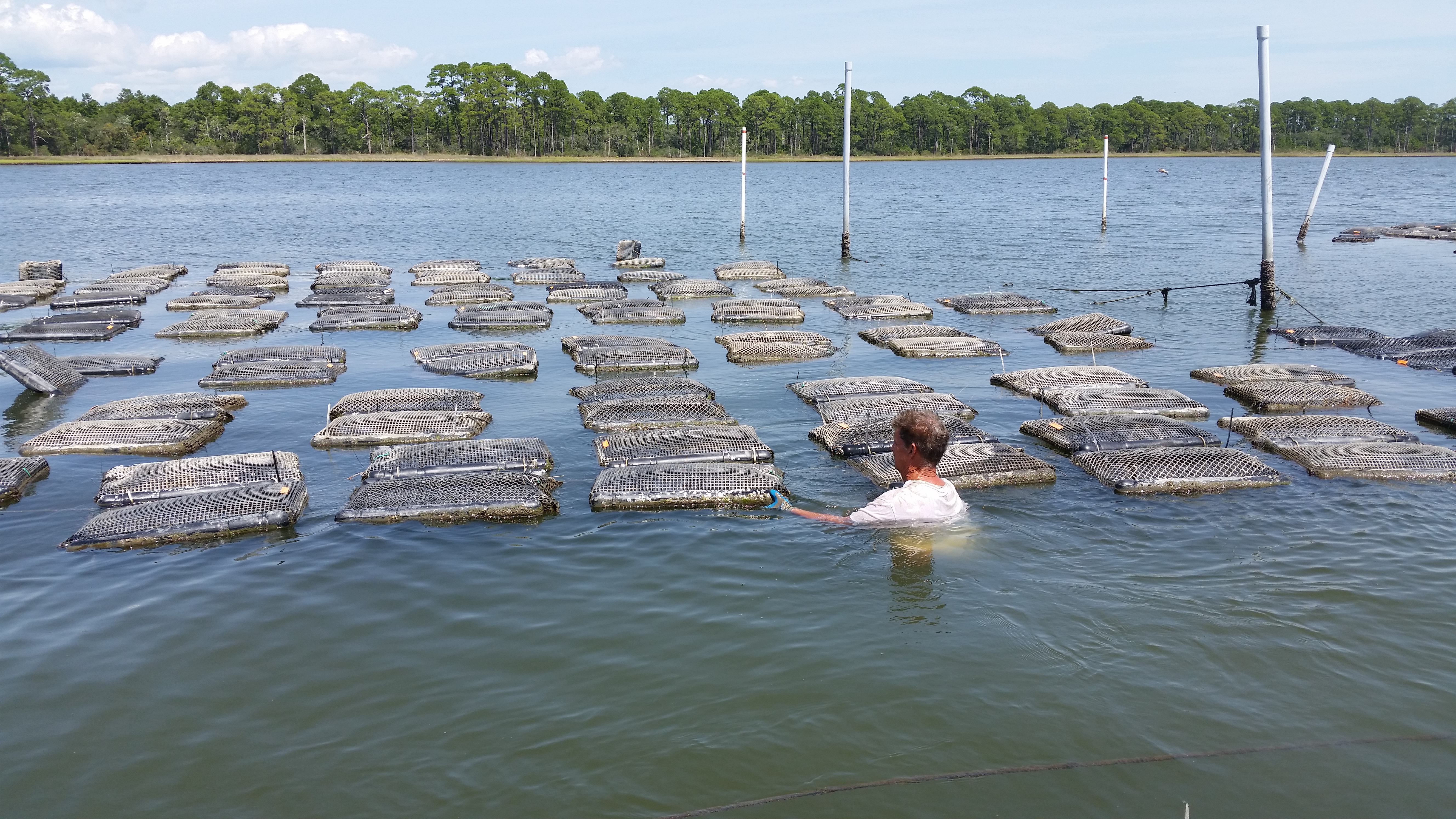
by Erik Lovestrand | Feb 2, 2018
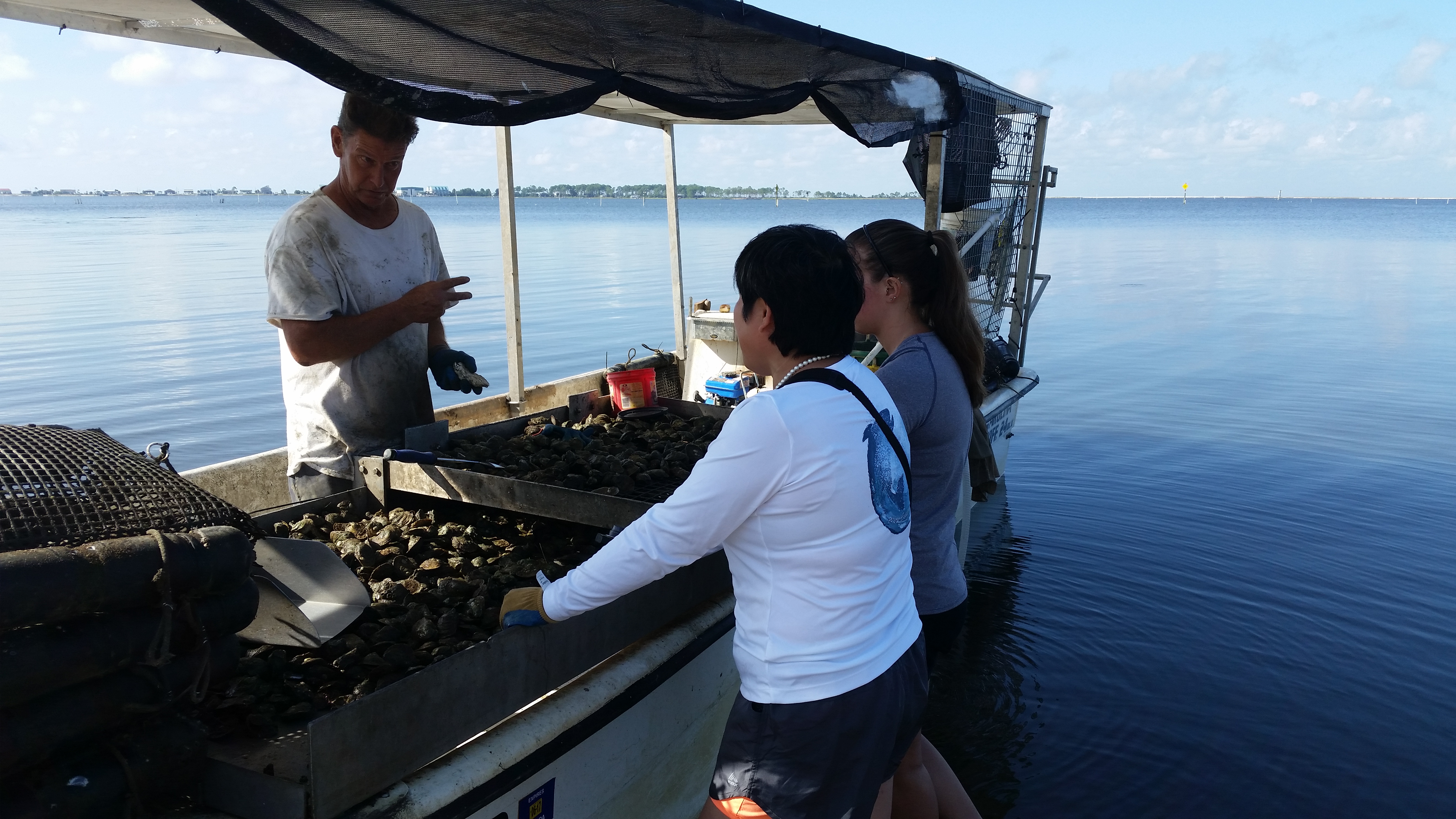
Sorting and re-caging take place on-site at the lease
Photo: Erik Lovestrand
There are a number of parallels than can be drawn between shellfish farming and traditional forms of agriculture that take place on the land. The most obvious similarities are the amount of hard work, grit and faith that are required of the farmer on land or sea. In spite of this there are many “salty” farmers in the Florida Panhandle who have mustered the faith requirement and are now putting in the hard work necessary to help build this budding industry in the Southeastern U.S.
Market demand for quality oysters has continued to outstrip available supplies for several years of late. This has been due in part to better marketing strategies employed by growers as well as clientele becoming aware of the health benefits of fresh oysters; a great supply of important vitamins and minerals, including vitamin C and B vitamins, zinc, selenium and iron. However, supply/demand ratios are not the only important factor in developing a thriving oyster aquaculture industry. Also required, is the necessary infrastructure to support the grower’s equipment needs, enough sources of baby oyster “seed”, a reliable refrigerated transportation network for live shellfish, and the support of regulatory agencies in making water leases available in suitable growing areas.
Fortunately, the stars seem to be aligning for many of these industry-growth necessities and the business of oyster farming is gaining a firmer foundation to build upon. One of the important milestones for Florida was the approval of “full-water-column” leases, which allows the use of floating oyster cages or bags. Previously, oysters were required to be grown on the bay bottom and this made them susceptible to higher levels of predation from crabs and snails and severe biofouling (barnacles and algae) on the exterior of the mesh bags. Heavy biofouling reduces the water flow through the oyster’s growing environment, thus the available food for this filter feeding bivalve.
One critical need for this industry is the availability of quality “seed” (baby oysters) to put in the growing waters. Seed oysters are supplied by hatcheries where oyster brood stocks are spawned and babies are raised to the necessary age for grower needs. Some growers use baby oyster larvae that have not settled and attached yet. These “eyed larvae” are put in a tank with old oyster shell and allowed to attach on the shells, which are then deployed at a lease site. Other growers use seed that has already attached to a small particle of crushed shell and are sold as individual oysters to be placed in grow-out bags or cages. The more recent development of oyster stocks with 3 sets of chromosomes (triploids) have provided growers with an oyster that gets to market size faster. Triploid oysters are infertile and do not use energy for spawning, thereby putting more energy into shell and tissue growth. Federal and state laws also govern where growers can buy their seed in an effort aimed at stopping the spread of shellfish disease from one body of water to another (i.e. Atlantic to Gulf of Mexico, etc.).
Even if all of the hardware and infrastructure is in place, there is still one other factor that plays a significant role in whether an oyster farmer will be successful. Just like the dairy farmer, the cattle rancher, the cotton or peanut grower, or the blueberry producer; backbreaking labor is necessary for many stages of the production cycle. Oyster growers work their leases either bending over the gunnels of a boat or actually being in the water, lifting heavy bags or cages of shellfish, sorting by size, re-caging, and moving lots of materials to and from the lease area. True grit and a dogged determination to stay on top of things, regardless of unpleasant conditions, are vital to raising a successful crop of oysters. And by the way, don’t forget that Mother Nature will have the final word. As all farmers know, they are required to be a good listener when she speaks.
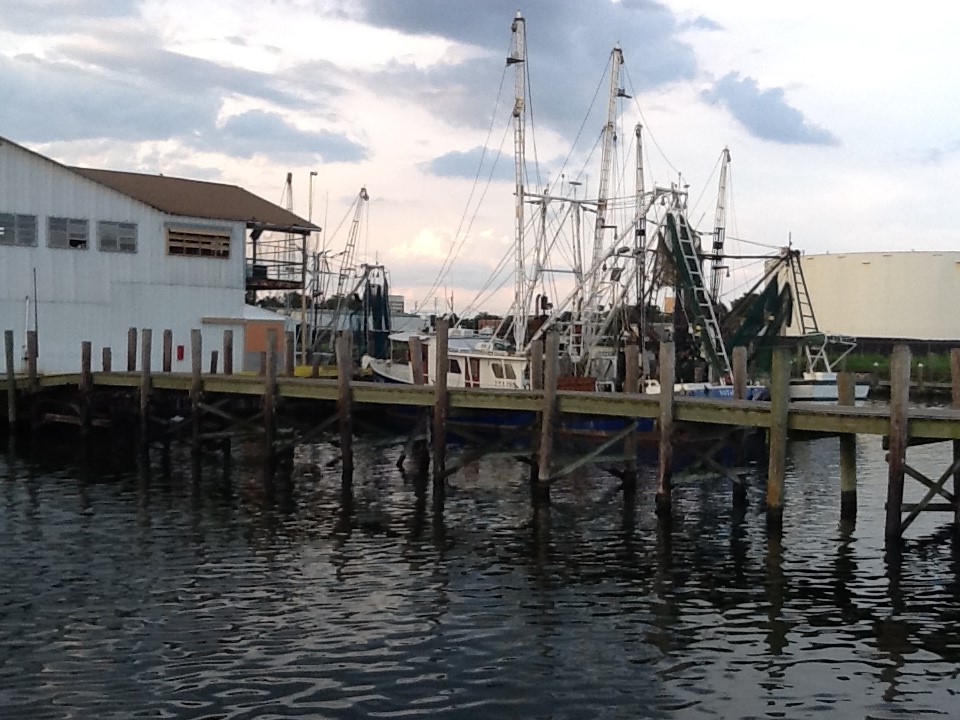
by Rick O'Connor | Jun 17, 2017
ARTICLE WRITTEN BY DR. CHARLES ADAMS, FLORIDA SEA GRANT
The demand for seafood in the US continues to grow. This growth is a function of a number of factors, including the increased awareness of the healthful attributes of many finfish and shellfish products, the increased availability of several key imported, cultured species (shrimp, tilapia, pangasius), and more convenient packaging for home consumption, to name just a few. In terms of wild-caught seafood, effective management at the state and federal level helps ensure the sustainable harvest of traditionally important species, such as reef fish, scallops, flounders, mackerels, and crab.
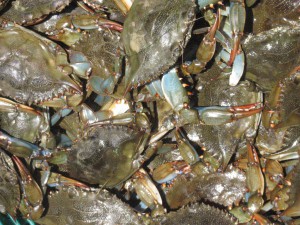
The famous blue crab.
Photo: FWC
According to the latest data from the National Marine Fisheries Service (NMFS), the US domestic fisheries fleet landed about 7.8 billion pounds of edible seafood products, valued at $5.2 billion. Florida plays an important role in this industry, particularly within the Gulf and South Atlantic region. Approximately $250 million worth of seafood is landed by the commercial harvesters in Florida on an annual basis, with some species being landed in Florida, and virtually nowhere else … including pink shrimp, spiny lobster, grouper and stone crab. But wild harvest is not the only source of finfish and shellfish products.
The commercial aquaculture industry is also growing, as the demand for species grown within controlled systems (such as catfish, oysters, striped bass, crawfish, and salmon) continues to increase. The latest NMFS data indicates that the commercial aquaculture industry in the US harvests approximately $1 billion worth of freshwater and saltwater species annually. The success story for aquacultured food items in Florida is molluscan shellfish, in particular cultured hard clams.
Though our wild seafood stocks are sustainably managed and aquaculture production is increasing, approximately 90% of the seafood consumed in the US is imported. Our domestic harvest and culture of seafood simply cannot keep up with demand. We are eating more and more seafood … with the latest NMFS estimate of annual, per capita seafood consumption being 15.5 lbs (edible meat weight). This is the highest level of per capita consumption since 2010. Even though demand is growing, consumers should be confident that the traditional species from our nation’s wild stocks will be there in the future. In addition, the aquaculture industry will help the seafood industry keep pace with growing demand. The seafood industry will continue to be an important source of incomes, jobs, and tax revenue for our coastal communities. And given the increasing number of cultured species and innovative packaging/preparation methods … now is a great time to be a seafood consumer!!
For more information about the US seafood industry, go to https://www.st.nmfs.noaa.gov/Assets/commercial/fus/fus15/documents/FUS2015%20Fact%20Sheet.pdf.
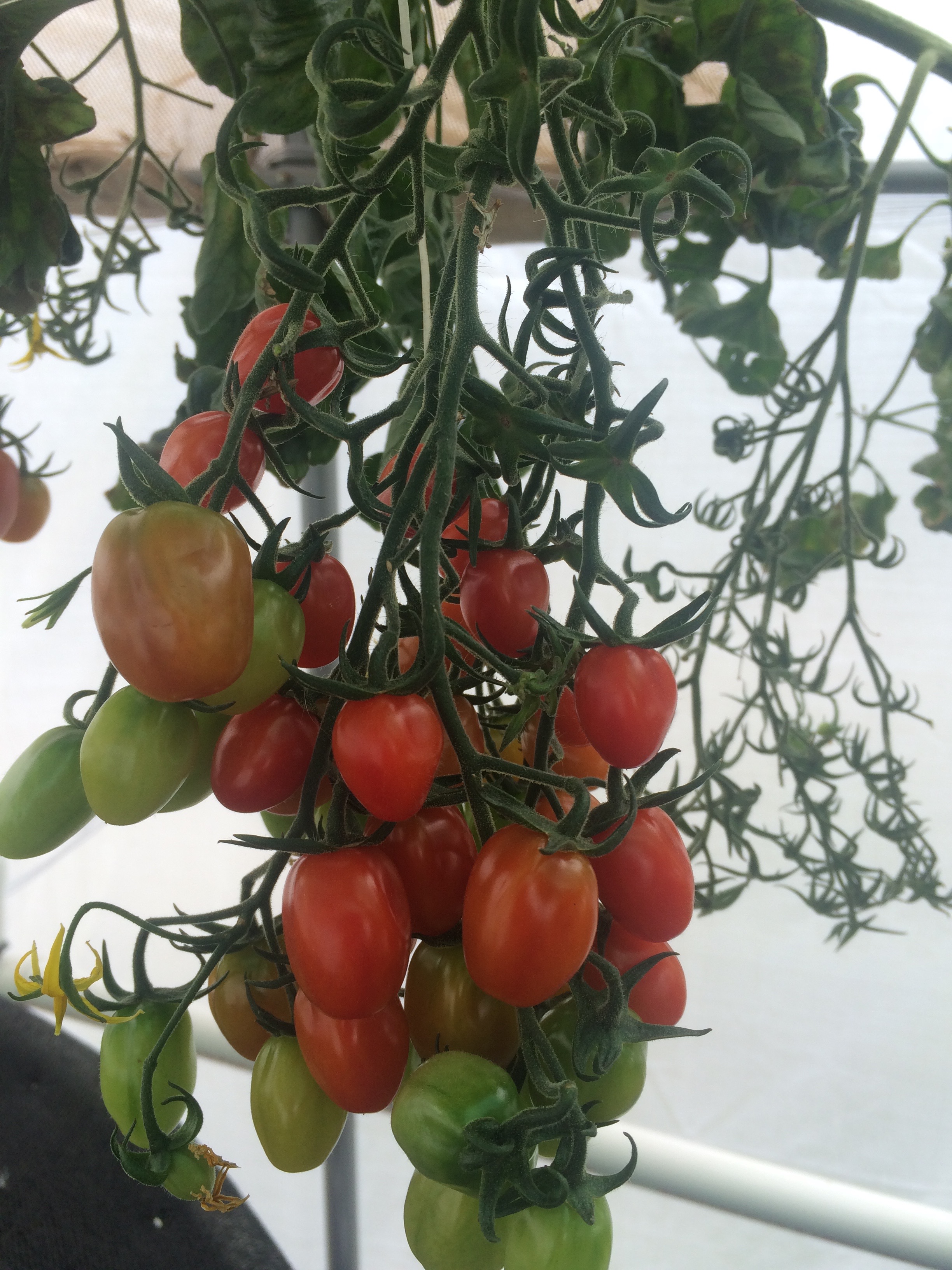
by Laura Tiu | Mar 11, 2017
There has been an increasing demand by clientele for information and training on small-scale food production methods to meet the growing demand for locally produced food and for personal consumption. One of the University of Florida Extension’s high-priority initiatives is “increasing the sustainability, profitability, and competitiveness of agricultural and horticultural enterprises.” One food production method currently being investigated is aquaponics.
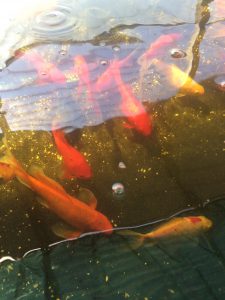
Koi are a popular fish species used in aquaponic systems.
Photo: Laura Tiu
Aquaponics is a technique for sustainable food production that utilizes the combination of aquaculture with hydroponics to grow fish and vegetables without soil. The process begins with fish producing waste, which is then pumped through a bio-filter to convert into fertilizer for the plants. Plants use nutrients from that water, and the freshly oxygenated water is returned to the fish tank. By recirculating the water from the fish tank to the grow bed, the need for water is greatly reduced compared to traditional irrigation. Additionally, producing crops aquaponically can reduce leaching, runoff, and water discharges to the environment by reusing nutrient effluent from aquaculture and hydroponic systems.
For new growers, being able to have access to training and to see a demonstration unit can eliminate many of the pitfalls typically encountered. A small aquaponics system, using local-sourced materials, is being constructed at the Walton County Extension office in DeFuniak Springs, FL. This system will demonstrate the technology and capability of small-scale aquaponics. The system is expected to be operational in April 2017. Working together, the Sea Grant, Horticulture, and Agriculture agents will be able to share construction and operation information with interested clients. Data will be collected from the system in order to give clientele real-world expectations of the operating costs and production potential from the system. Information will be shared in face-to-face interactions, at workshops, via webinar and in published articles. The goal is to see an increase in the number of aquaponics operations in the Panhandle of Florida contributing to an increase in availability of locally and sustainably produced food.
If you would like to see the system or learn more about aquaponics by subscribing to our Aquaponics list serve, please email Laura Tiu, lgtiu@ufl.edu.
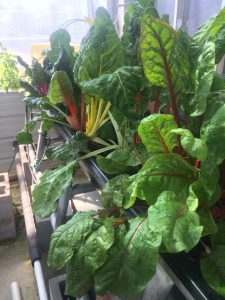
Greens tend to do very well in aquaponic systems.
Photo: Laura Tiu
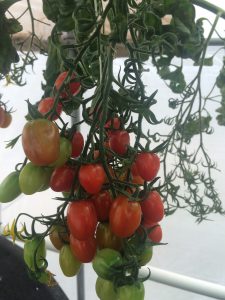
A panhandle favorite, tomatoes can be grown using aquaponics.
Photo: Laura Tiu
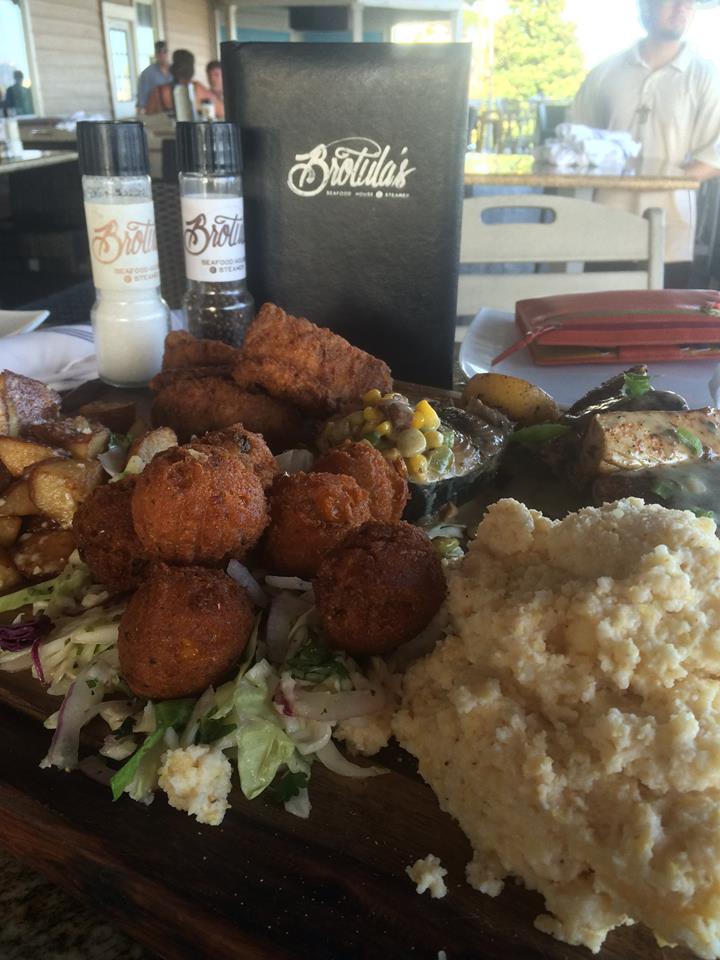
by Laura Tiu | Oct 7, 2016
I’ve spent the past 25 years studying and growing fish. When folks find out I’m a fish head, I often get a lot of questions about the safety and sustainability of many seafood products. It seems that the media and other groups have done a good job of scaring and confusing the American public to the point that some forgo consuming seafood altogether. That is such a shame because seafood is great for human health. Seafood is typically high protein, low in fat and calories and bursting with good for you stuff like omega-3s.
Seafood is either wild caught, aquacultured (farm-raised), or both. Both wild fisheries and aquaculture have their pros and cons. Overfishing, illegal fishing, bycatch, habitat degradation and lack of effective regulation have led to declines in wild fisheries. Aquaculture has been plagued with claims of pollution, disease and escapees. With all this negative press, what is the consumer to do?
You can choose your seafood based on its sustainability. Sustainable seafood has been caught or farmed in sustainable ways. And there are several groups today that make choosing these sustainable product easy. Once such group is the Monterrey Bay Aquarium. Their Seafood Watch program makes it easy for you to choose seafood that’s fished or farmed in ways that have less impact on the environment.
Using science-based criteria and input from fisheries and aquaculture experts, Seafood Watch has developed standards and guiding principles to develop consumer friendly guides. The guides are specific to each state and there is even one for sushi. These printable guides fit easily into your wallet so that you can use them anytime you purchase seafood. The guide shows with seafood items are “Best Choices” or “Good Alternatives,” and which ones you should “Avoid.” They also have an app for android and IPhone making it easier than ever to get the latest recommendations for seafood and sushi, learn more about the seafood you eat, and locate or share businesses that serve sustainable seafood.
As consumers, we have a lot of power in the seafood marketplace. With over 75% of the world’s fisheries either fully fished or overfished, we need to make smart choices about the seafood we buy and consume. By supporting fisheries and fish farms that are working hard to limit their impact on the environment we help protect the seafood we love. By using the seafood guide for your region, you’re making choices based on the best available information and supporting environmentally friendly fisheries and aquaculture operations.
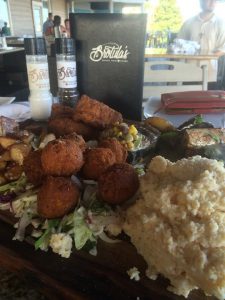
Brotula’s Restaurant in Destin, Florida will cook your fresh catch to perfection.
















